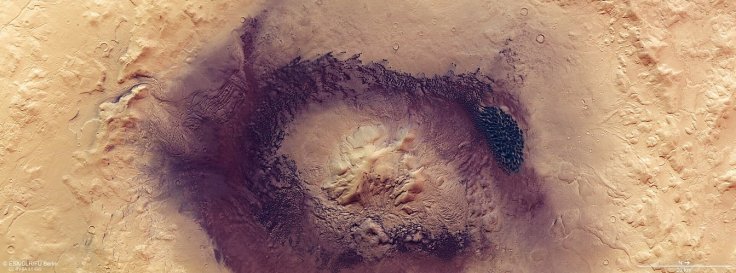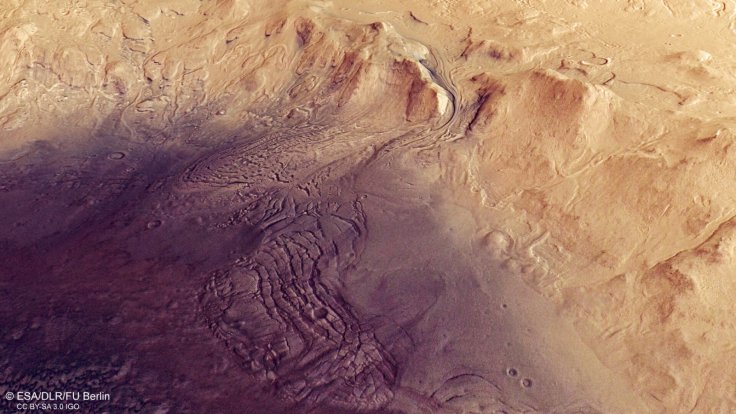The European Space Agency (ESA) was able to capture detailed photos of an impact crater on Mars through its current mission on the Red Planet. The images captured by the agency's orbiter show the unique appearance of the Moreux crater.
These photos of Moreux crater were taken by the Mars Express, a robotic orbiter that was launched by the ESA in 2003 to study Mars. The latest images focused on the Terra Sabaea region on the Red Planet, which features various prominent geological features such as sand dunes.

Spotting An Impact Crater On Mars
Near the northern edge of this region is an area speckled with impact craters caused by asteroids. Among these is the Moreux crater. This is a massive crater that measures about 135 kilometers wide and 3 kilometers deep. The crater has a central peak, which scientists believe rose upwards from the ground due to an impact. Observations on the crater indicate that its central peak stands about 2 kilometers tall.

Moreux Crater's Distinct Features
Compared to other impact craters on Mars, ESA noted that Moreux is very different due to its appearance. According to the agency, the Moreux crater's overall structure is a bit misshapen. Aside from having a central peak, the rim lining the entire crater is broken. The ESA noted that erosion possibly caused by the harsh Martian winds and asteroid impacts could be the reason behind the strange appearance of the Moreux Crater.
"When compared to other impact craters on both Mars and Earth, Moreux crater appears a little misshapen and messy – the result of ongoing erosion over Martian history," the ESA stated.

Colors Of The Moreux Crater
Aside from its structure, the Moreux crater is characterized by the varying colors of its features. In the photos captured by the Mars Express, the walls surrounding the crater are very dark, which is very different from its light-colored surroundings.
On the other hand, the peak at the center of the crater stands out from its surroundings due to its pale color. According to the ESA, the different colors of the Moreux crater were created through the initial asteroid impact and the Martian winds carrying volcanic sand and ash.









